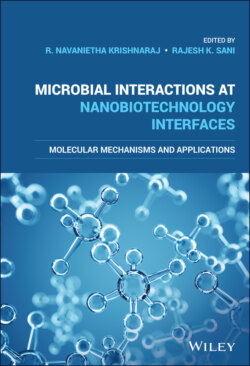Читать книгу Microbial Interactions at Nanobiotechnology Interfaces - Группа авторов - Страница 50
1.10.3 Zeta Potential
ОглавлениеIn addition to size and shape, zeta potential (surface charge) of the NMs is also known to affect the behavior of NMs. It is clear from the literature that the surface charge of the NMs has a strong influence on the adhesion of bacteria. Since bacterial cell surface is negatively charged, NMs with positive charge exert electrostatic attraction, which helps in the adsorption of bacteria onto the surface. This is the reason behind the enhanced ROS production by positively charged NM in comparison to neutral and negatively charged NMs. However, negatively charged NMs exhibit antimicrobial property at a higher concentration through molecular crowding leading to the interaction of NM surface with bacteria.
Pan et al. (2013) studied the antibacterial activity of Mg(OH)2 prepared using different precursors (MgCl2, MgO, and MgSO4). It has been reported that positively charged Mg(OH)2 NPs prepared with MgCl2 exhibited greater antimicrobial property against E. coli in comparison to negatively charged particles prepared with MgO. This was due to electrostatic interaction between the positively charged Mg(OH)2 with the negatively charged bacterial cell membrane resulting in damage to bacterial cell (Pan et al., 2013).
